10 Hard Math Problems That Even the Smartest People in the World Can’t Crack
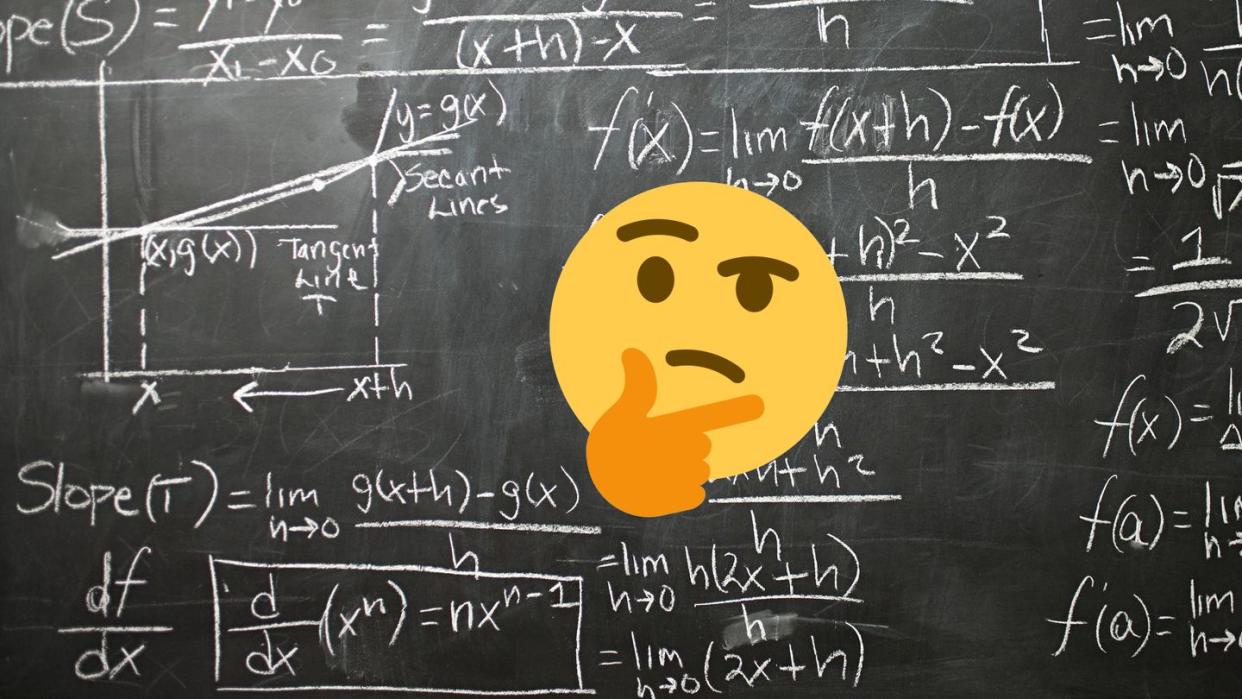
For all of the recent strides we’ve made in the math world—like a supercomputer finally solving the Sum of Three Cubes problem that puzzled mathematicians for 65 years—we’re forever crunching calculations in pursuit of deeper numerical knowledge. Some math problems have been challenging us for centuries, and while brain-busters like these hard math problems may seem impossible, someone is bound to solve ’em eventually. Well, maybe.
For now, you can take a crack at the hardest math problems known to man, woman, and machine. For more puzzles and brainteasers, check out Puzzmo.
✅ More from Popular Mechanics:
To Create His Geometric Artwork, M.C. Escher Had to Learn Math the Hard Way
The Game of Trees is a Mad Math Theory That Is Impossible to Prove
The Collatz Conjecture
In September 2019, news broke regarding progress on this 82-year-old question, thanks to prolific mathematician Terence Tao. And while the story of Tao’s breakthrough is promising, the problem isn’t fully solved yet.
A refresher on the Collatz Conjecture: It’s all about that function f(n), shown above, which takes even numbers and cuts them in half, while odd numbers get tripled and then added to 1. Take any natural number, apply f, then apply f again and again. You eventually land on 1, for every number we’ve ever checked. The Conjecture is that this is true for all natural numbers (positive integers from 1 through infinity).
✅ Down the Rabbit Hole: The Math That Helps the James Webb Space Telescope Sit Steady in Space
Tao’s recent work is a near-solution to the Collatz Conjecture in some subtle ways. But he most likely can’t adapt his methods to yield a complete solution to the problem, as Tao subsequently explained. So, we might be working on it for decades longer.
The Conjecture lives in the math discipline known as Dynamical Systems, or the study of situations that change over time in semi-predictable ways. It looks like a simple, innocuous question, but that’s what makes it special. Why is such a basic question so hard to answer? It serves as a benchmark for our understanding; once we solve it, then we can proceed onto much more complicated matters.
The study of dynamical systems could become more robust than anyone today could imagine. But we’ll need to solve the Collatz Conjecture for the subject to flourish.
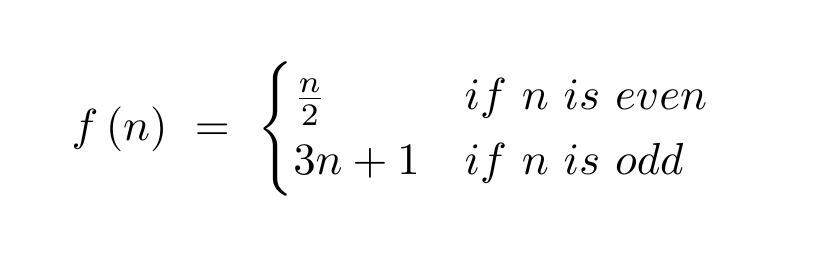
Goldbach’s Conjecture
One of the greatest unsolved mysteries in math is also very easy to write. Goldbach’s Conjecture is, “Every even number (greater than two) is the sum of two primes.” You check this in your head for small numbers: 18 is 13+5, and 42 is 23+19. Computers have checked the Conjecture for numbers up to some magnitude. But we need proof for all natural numbers.
Goldbach’s Conjecture precipitated from letters in 1742 between German mathematician Christian Goldbach and legendary Swiss mathematician Leonhard Euler, considered one of the greatest in math history. As Euler put it, “I regard [it] as a completely certain theorem, although I cannot prove it.”
✅ Dive In: The Math Behind Our Current Theory of Human Color Perception Is Wrong
Euler may have sensed what makes this problem counterintuitively hard to solve. When you look at larger numbers, they have more ways of being written as sums of primes, not less. Like how 3+5 is the only way to break 8 into two primes, but 42 can broken into 5+37, 11+31, 13+29, and 19+23. So it feels like Goldbach’s Conjecture is an understatement for very large numbers.
Still, a proof of the conjecture for all numbers eludes mathematicians to this day. It stands as one of the oldest open questions in all of math.
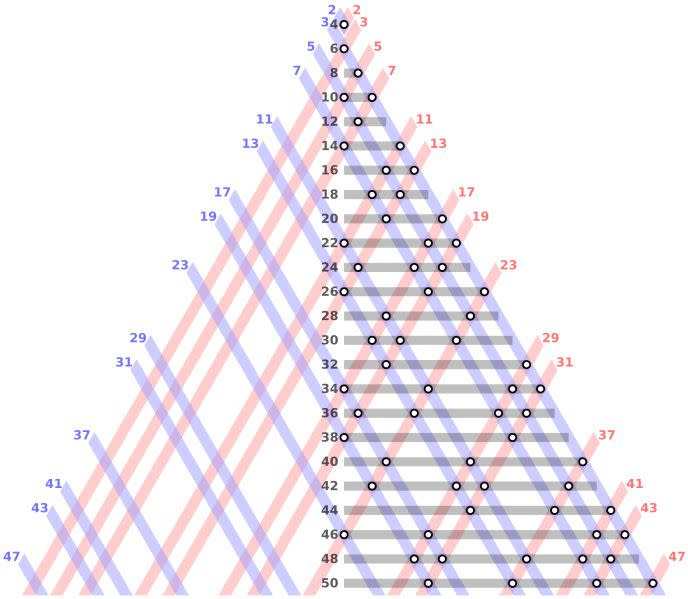
The Twin Prime Conjecture
Together with Goldbach’s, the Twin Prime Conjecture is the most famous in Number Theory—or the study of natural numbers and their properties, frequently involving prime numbers. Since you've known these numbers since grade school, stating the conjectures is easy.
When two primes have a difference of 2, they’re called twin primes. So 11 and 13 are twin primes, as are 599 and 601. Now, it's a Day 1 Number Theory fact that there are infinitely many prime numbers. So, are there infinitely many twin primes? The Twin Prime Conjecture says yes.
Let’s go a bit deeper. The first in a pair of twin primes is, with one exception, always 1 less than a multiple of 6. And so the second twin prime is always 1 more than a multiple of 6. You can understand why, if you’re ready to follow a bit of heady Number Theory.
✅ Keep Learning: If We Draw Graphs Like This, We Can Change Computers Forever
All primes after 2 are odd. Even numbers are always 0, 2, or 4 more than a multiple of 6, while odd numbers are always 1, 3, or 5 more than a multiple of 6. Well, one of those three possibilities for odd numbers causes an issue. If a number is 3 more than a multiple of 6, then it has a factor of 3. Having a factor of 3 means a number isn’t prime (with the sole exception of 3 itself). And that's why every third odd number can't be prime.
How’s your head after that paragraph? Now imagine the headaches of everyone who has tried to solve this problem in the last 170 years.
The good news is that we’ve made some promising progress in the last decade. Mathematicians have managed to tackle closer and closer versions of the Twin Prime Conjecture. This was their idea: Trouble proving there are infinitely many primes with a difference of 2? How about proving there are infinitely many primes with a difference of 70,000,000? That was cleverly proven in 2013 by Yitang Zhang at the University of New Hampshire.
For the last six years, mathematicians have been improving that number in Zhang’s proof, from millions down to hundreds. Taking it down all the way to 2 will be the solution to the Twin Prime Conjecture. The closest we’ve come—given some subtle technical assumptions—is 6. Time will tell if the last step from 6 to 2 is right around the corner, or if that last part will challenge mathematicians for decades longer.
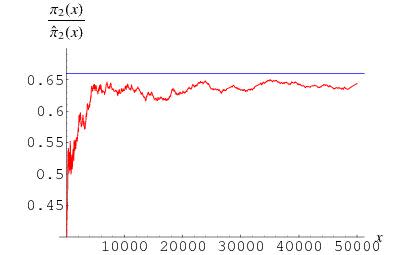
The Riemann Hypothesis
Today’s mathematicians would probably agree that the Riemann Hypothesis is the most significant open problem in all of math. It’s one of the seven Millennium Prize Problems, with $1 million reward for its solution. It has implications deep into various branches of math, but it’s also simple enough that we can explain the basic idea right here.
There is a function, called the Riemann zeta function, written in the image above.
For each s, this function gives an infinite sum, which takes some basic calculus to approach for even the simplest values of s. For example, if s=2, then 𝜁(s) is the well-known series 1 + 1/4 + 1/9 + 1/16 + …, which strangely adds up to exactly 𝜋²/6. When s is a complex number—one that looks like a+b𝑖, using the imaginary number 𝑖—finding 𝜁(s) gets tricky.
So tricky, in fact, that it’s become the ultimate math question. Specifically, the Riemann Hypothesis is about when 𝜁(s)=0; the official statement is, “Every nontrivial zero of the Riemann zeta function has real part 1/2.” On the plane of complex numbers, this means the function has a certain behavior along a special vertical line. The hypothesis is that the behavior continues along that line infinitely.
✅ Stay Curious: How to Paint a Room Using Math
The Hypothesis and the zeta function come from German mathematician Bernhard Riemann, who described them in 1859. Riemann developed them while studying prime numbers and their distribution. Our understanding of prime numbers has flourished in the 160 years since, and Riemann would never have imagined the power of supercomputers. But lacking a solution to the Riemann Hypothesis is a major setback.
If the Riemann Hypothesis were solved tomorrow, it would unlock an avalanche of further progress. It would be huge news throughout the subjects of Number Theory and Analysis. Until then, the Riemann Hypothesis remains one of the largest dams to the river of math research.

The Birch and Swinnerton-Dyer Conjecture
The Birch and Swinnerton-Dyer Conjecture is another of the six unsolved Millennium Prize Problems, and it’s the only other one we can remotely describe in plain English. This Conjecture involves the math topic known as Elliptic Curves.
When we recently wrote about the toughest math problems that have been solved, we mentioned one of the greatest achievements in 20th-century math: the solution to Fermat’s Last Theorem. Sir Andrew Wiles solved it using Elliptic Curves. So, you could call this a very powerful new branch of math.
✅ The Latest: Mathematicians Discovered Something Mind-Blowing About the Number 15
In a nutshell, an elliptic curve is a special kind of function. They take the unthreatening-looking form y²=x³+ax+b. It turns out functions like this have certain properties that cast insight into math topics like Algebra and Number Theory.
British mathematicians Bryan Birch and Peter Swinnerton-Dyer developed their conjecture in the 1960s. Its exact statement is very technical, and has evolved over the years. One of the main stewards of this evolution has been none other than Wiles. To see its current status and complexity, check out this famous update by Wells in 2006.
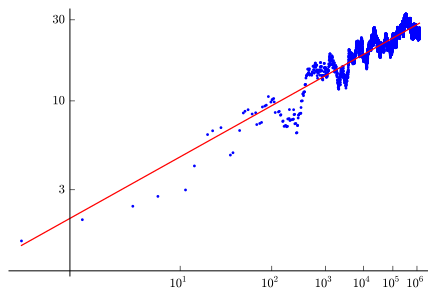
The Kissing Number Problem
A broad category of problems in math are called the Sphere Packing Problems. They range from pure math to practical applications, generally putting math terminology to the idea of stacking many spheres in a given space, like fruit at the grocery store. Some questions in this study have full solutions, while some simple ones leave us stumped, like the Kissing Number Problem.
When a bunch of spheres are packed in some region, each sphere has a Kissing Number, which is the number of other spheres it’s touching; if you’re touching 6 neighboring spheres, then your kissing number is 6. Nothing tricky. A packed bunch of spheres will have an average kissing number, which helps mathematically describe the situation. But a basic question about the kissing number stands unanswered.
✅ Miracles Happen: Mathematicians Finally Make a Breakthrough on the Ramsey Number
First, a note on dimensions. Dimensions have a specific meaning in math: they’re independent coordinate axes. The x-axis and y-axis show the two dimensions of a coordinate plane. When a character in a sci-fi show says they’re going to a different dimension, that doesn’t make mathematical sense. You can’t go to the x-axis.
A 1-dimensional thing is a line, and 2-dimensional thing is a plane. For these low numbers, mathematicians have proven the maximum possible kissing number for spheres of that many dimensions. It’s 2 when you’re on a 1-D line—one sphere to your left and the other to your right. There’s proof of an exact number for 3 dimensions, although that took until the 1950s.
Beyond 3 dimensions, the Kissing Problem is mostly unsolved. Mathematicians have slowly whittled the possibilities to fairly narrow ranges for up to 24 dimensions, with a few exactly known, as you can see on this chart. For larger numbers, or a general form, the problem is wide open. There are several hurdles to a full solution, including computational limitations. So expect incremental progress on this problem for years to come.

The Unknotting Problem
The simplest version of the Unknotting Problem has been solved, so there’s already some success with this story. Solving the full version of the problem will be an even bigger triumph.
You probably haven’t heard of the math subject Knot Theory. It’s taught in virtually no high schools, and few colleges. The idea is to try and apply formal math ideas, like proofs, to knots, like … well, what you tie your shoes with.
For example, you might know how to tie a “square knot” and a “granny knot.” They have the same steps except that one twist is reversed from the square knot to the granny knot. But can you prove that those knots are different? Well, knot theorists can.
✅ Up Next: The Amazing Math Inside the Rubik’s Cube
Knot theorists’ holy grail problem was an algorithm to identify if some tangled mess is truly knotted, or if it can be disentangled to nothing. The cool news is that this has been accomplished! Several computer algorithms for this have been written in the last 20 years, and some of them even animate the process.
But the Unknotting Problem remains computational. In technical terms, it’s known that the Unknotting Problem is in NP, while we don’t know if it’s in P. That roughly means that we know our algorithms are capable of unknotting knots of any complexity, but that as they get more complicated, it starts to take an impossibly long time. For now.
If someone comes up with an algorithm that can unknot any knot in what’s called polynomial time, that will put the Unknotting Problem fully to rest. On the flip side, someone could prove that isn’t possible, and that the Unknotting Problem’s computational intensity is unavoidably profound. Eventually, we’ll find out.

The Large Cardinal Project
If you’ve never heard of Large Cardinals, get ready to learn. In the late 19th century, a German mathematician named Georg Cantor figured out that infinity comes in different sizes. Some infinite sets truly have more elements than others in a deep mathematical way, and Cantor proved it.
There is the first infinite size, the smallest infinity, which gets denoted ℵ₀. That’s a Hebrew letter aleph; it reads as “aleph-zero.” It’s the size of the set of natural numbers, so that gets written |ℕ|=ℵ₀.
Next, some common sets are larger than size ℵ₀. The major example Cantor proved is that the set of real numbers is bigger, written |ℝ|>ℵ₀. But the reals aren’t that big; we’re just getting started on the infinite sizes.
✅ More Mind-Blowing Stuff: Mathematicians Discovered a New 13-Sided Shape That Can Do Remarkable Things
For the really big stuff, mathematicians keep discovering larger and larger sizes, or what we call Large Cardinals. It’s a process of pure math that goes like this: Someone says, “I thought of a definition for a cardinal, and I can prove this cardinal is bigger than all the known cardinals.” Then, if their proof is good, that’s the new largest known cardinal. Until someone else comes up with a larger one.
Throughout the 20th century, the frontier of known large cardinals was steadily pushed forward. There’s now even a beautiful wiki of known large cardinals, named in honor of Cantor. So, will this ever end? The answer is broadly yes, although it gets very complicated.
In some senses, the top of the large cardinal hierarchy is in sight. Some theorems have been proven, which impose a sort of ceiling on the possibilities for large cardinals. But many open questions remain, and new cardinals have been nailed down as recently as 2019. It’s very possible we will be discovering more for decades to come. Hopefully we’ll eventually have a comprehensive list of all large cardinals.

What’s the Deal with 𝜋+e?
Given everything we know about two of math’s most famous constants, 𝜋 and e, it’s a bit surprising how lost we are when they’re added together.
This mystery is all about algebraic real numbers. The definition: A real number is algebraic if it’s the root of some polynomial with integer coefficients. For example, x²-6 is a polynomial with integer coefficients, since 1 and -6 are integers. The roots of x²-6=0 are x=√6 and x=-√6, so that means √6 and -√6 are algebraic numbers.
✅ Try It Yourself: Can You Solve This Viral Brain Teaser From TikTok?
All rational numbers, and roots of rational numbers, are algebraic. So it might feel like “most” real numbers are algebraic. Turns out, it’s actually the opposite. The antonym to algebraic is transcendental, and it turns out almost all real numbers are transcendental—for certain mathematical meanings of “almost all.” So who’s algebraic, and who’s transcendental?
The real number 𝜋 goes back to ancient math, while the number e has been around since the 17th century. You’ve probably heard of both, and you’d think we know the answer to every basic question to be asked about them, right?
Well, we do know that both 𝜋 and e are transcendental. But somehow it’s unknown whether 𝜋+e is algebraic or transcendental. Similarly, we don’t know about 𝜋e, 𝜋/e, and other simple combinations of them. So there are incredibly basic questions about numbers we’ve known for millennia that still remain mysterious.
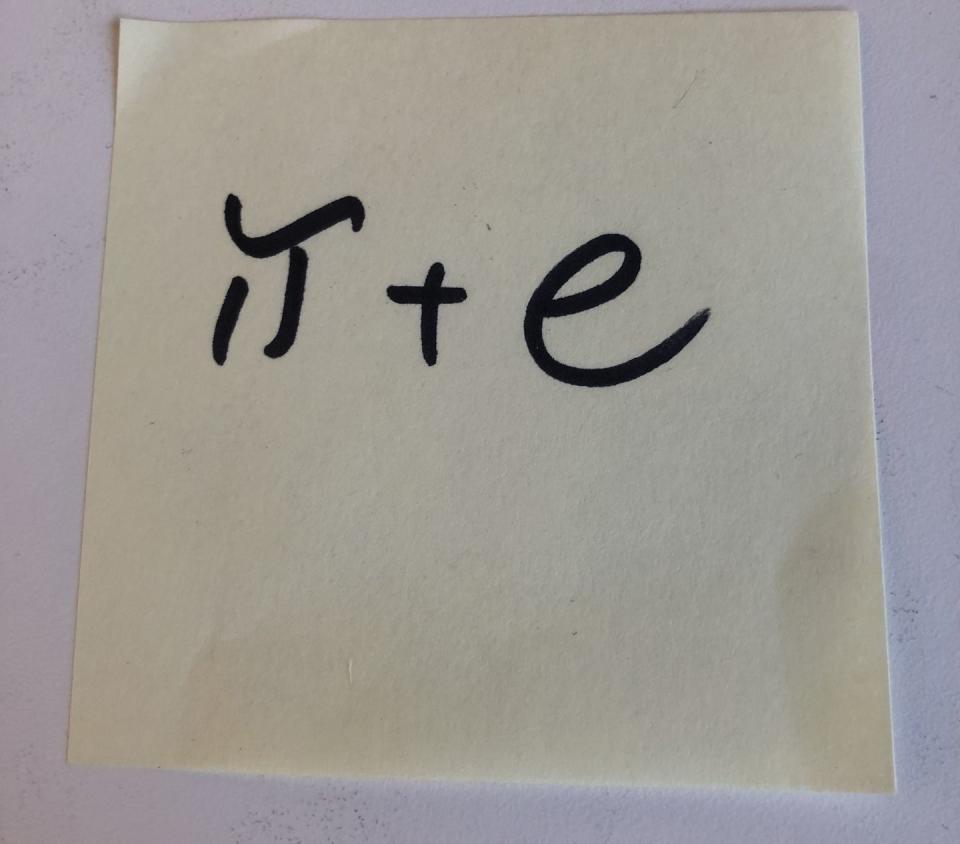
Is 𝛾 Rational?
Here’s another problem that’s very easy to write, but hard to solve. All you need to recall is the definition of rational numbers.
Rational numbers can be written in the form p/q, where p and q are integers. So, 42 and -11/3 are rational, while 𝜋 and √2 are not. It’s a very basic property, so you’d think we can easily tell when a number is rational or not, right?
Meet the Euler-Mascheroni constant 𝛾, which is a lowercase Greek gamma. It’s a real number, approximately 0.5772, with a closed form that’s not terribly ugly; it looks like the image above.
✅ One More Thing: Teens Have Proven the Pythagorean Theorem With Trigonometry. That Should Be Impossible
The sleek way of putting words to those symbols is “gamma is the limit of the difference of the harmonic series and the natural log.” So, it’s a combination of two very well-understood mathematical objects. It has other neat closed forms, and appears in hundreds of formulas.
But somehow, we don’t even know if 𝛾 is rational. We’ve calculated it to half a trillion digits, yet nobody can prove if it’s rational or not. The popular prediction is that 𝛾 is irrational. Along with our previous example 𝜋+e, we have another question of a simple property for a well-known number, and we can’t even answer it.

You Might Also Like

